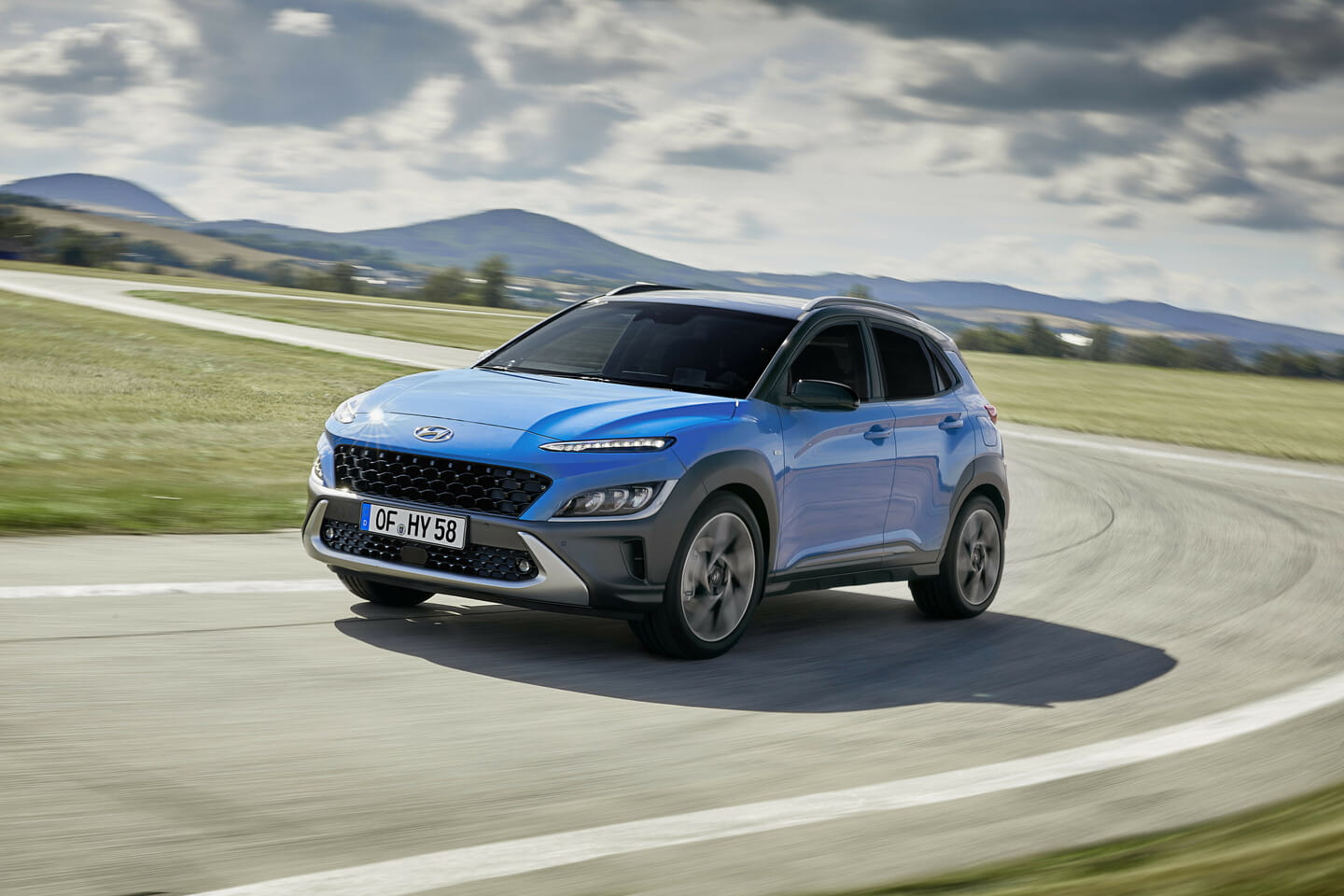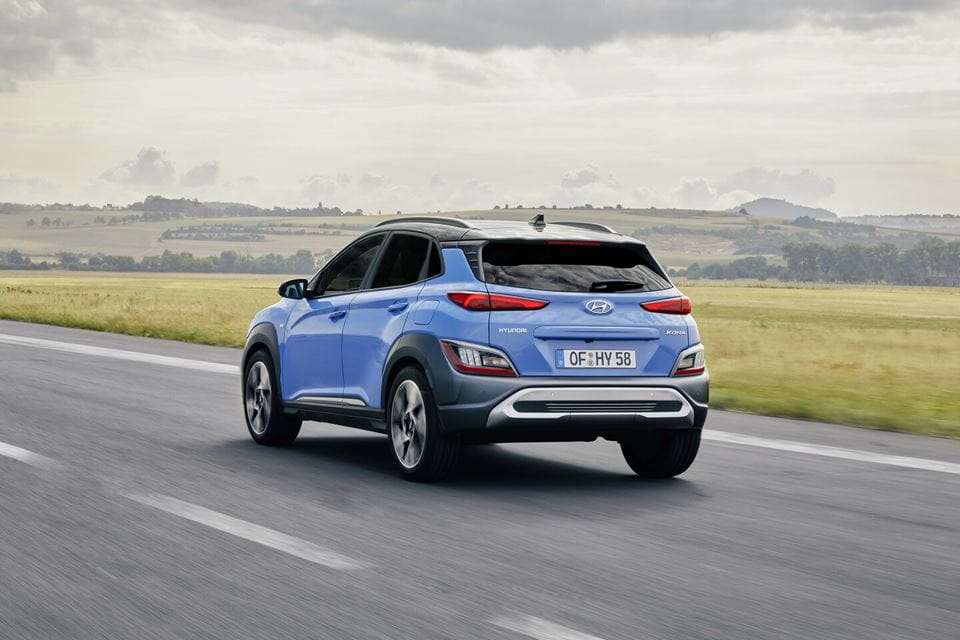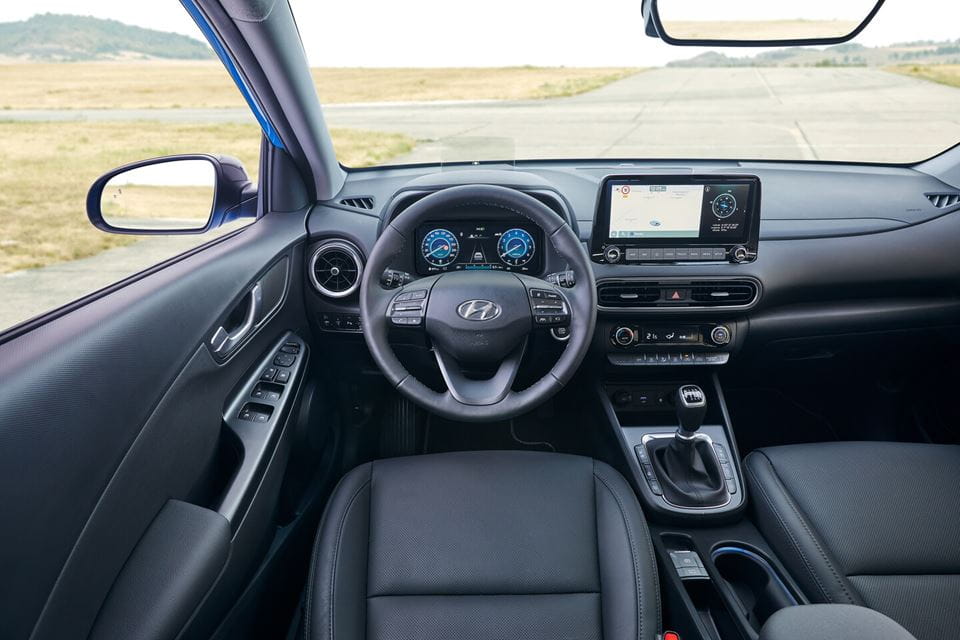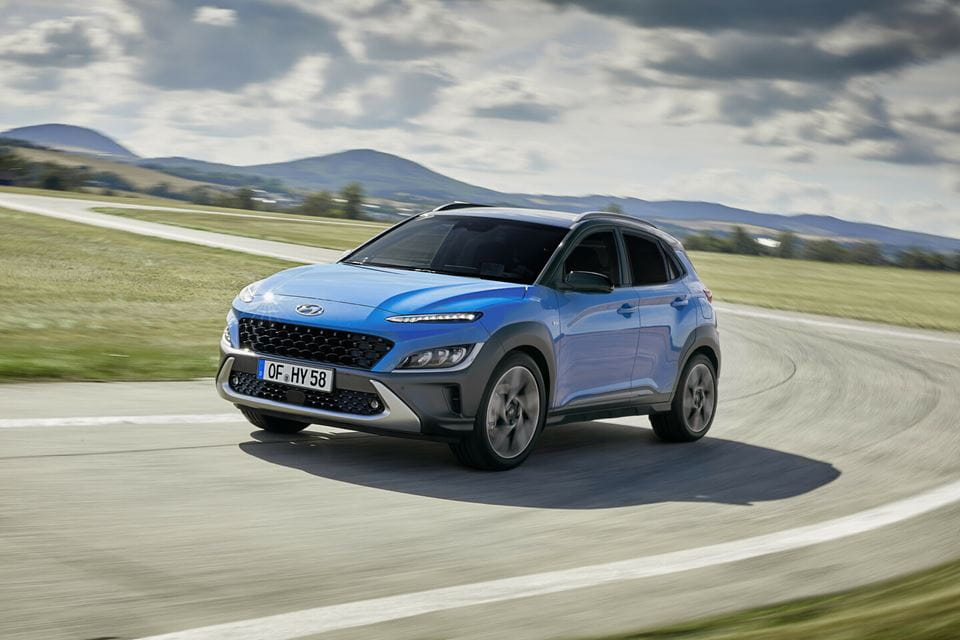
Car review – Hyundai Kona Hybrid
A Kona for everyone
Hyundai is one of the few brands to offer all possible powertrains in one model. The Kona, for example, is available as a diesel, petrol, electric car and hybrid.

Plenty of choice
It’s entirely possible you don’t know which type of motor to choose, but one thing’s for sure – you won’t need to look any further than the Kona range. It offers versions with a petrol engine (1.0 T-GDI with 120 hp, 1.6 T-GDI with 198 hp), a diesel (1.6 CRDi with 136 hp), a fully electric version with 39.2 or 64 kWh battery capacity and, last but not least, this hybrid.
It’s not a plug-in, but a parallel hybrid that combines a combustion engine with an electric motor and a 1.56 kWh battery that gets charged when the car brakes. At 112 to 114 g (WLTP), its standard emissions are lower than its classic competitors.

Not a sprinter
The system power is 141 hp and maximum torque 256 Nm. These values are reached thanks to the combination of a 1,580 cc four-cylinder with 105 hp and 147 Nm, and an electric motor with 43.5 hp and 170 Nm. Although 141 hp isn’t nothing, this 1,376 kg compact crossover is not a fast car.
It accelerates from 0 to 100 km/h in 11 seconds and can reach 161 km/h, which is enough to be able to easily keep up with traffic. But this Kona isn’t the right choice for thrill seekers: there’s nothing sporty about it.

Economical trump card
With an average of 5.5 l/100 km, including stretches on the motorway with four adults and a fully loaded boot, the Kona Hybrid is nothing short of economical. It proves that going hybrid makes a real difference, by reducing emissions and consumption, and is therefore a nice middle ground on the way to fully electric driving.
The Kona Hybrid is only available with a six-speed dual-clutch automatic transmission. That 6-DCT gearbox has one less gear than its conventional drive brothers, but it is sufficiently smooth and certainly more pleasant than the CVT automatic transmission of many of its competitors.
Not a big SUV
The amount of space in the front is good, but the back is less comfortable for anyone with long legs. It’s important to remember that this is a compact crossover and not a large SUV. At 374 litres, the cargo capacity is just enough for everyday use. It’s been finished to a high standard, but there’s still a lot of hard plastic being used for the interior.



